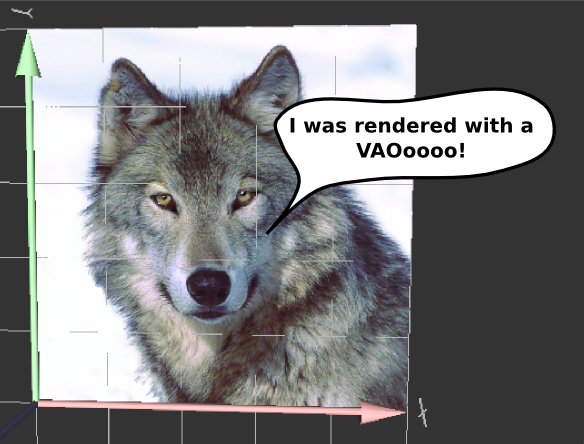I bet creating searchable PDFs has been done many times over, even so I’d like to share the way I did it recently with strictly open source tools. The pipeline is simple: GS to separate the PDF to pages, tesseract OCR to extract text, hocr2pdf to create a merged PDF and GS again to bundle everything back to unified PDF. If you’re creating a PDF from scanned books, this project may also be of help: unpaper
Edit 5/21/2014: I’ve had good experience using Scantailor, which is available on homebrew for the Mac. And also, I’ve submitted hocr2pdf to homebrew as part of the exact-image library (the name of the formula is “exact-image”).
Author: Roy

 Phew. Finally this is working!
Phew. Finally this is working!
I’ve been confined to OpenGL 2.1 and GLSL 1.2 on the Mac since the Qt OpenGL context will not pick up the core OpenGL profile (a big problem on it’s own) and get an OpenGL 3.x and GLSL 1.5… So it’s back to old school GL’ing, but anyway some things are working, albeit they have their quirks.
So for all of you battling the OpenGL 2.1 war, here’s how I made VAOs work with a very simple shader.
 For those of you still interested, I’ve made the move to using Qt and QGLViewer in the SfM-Toy-Lib project. Getting rid of PCL dependency (I think it’s a bloated library), and burying FLTK long in the past, I feel much better about it now.
For those of you still interested, I’ve made the move to using Qt and QGLViewer in the SfM-Toy-Lib project. Getting rid of PCL dependency (I think it’s a bloated library), and burying FLTK long in the past, I feel much better about it now.
Get it on github: https://github.com/royshil/SfM-Toy-Library
 So QSerialPort only became part of Qt core on Qt5.1, but what should all those Qt4 projects do for an easy serial port access?
So QSerialPort only became part of Qt core on Qt5.1, but what should all those Qt4 projects do for an easy serial port access?
There is the excellent QExtSerialPort project, but it only has a QMake build system, and I like CMake!
Not to worry, a CMake build is easy to set up…
I haven’t found a CMake module to find FFMPEG libraries, so I wrote one (a while back) and I thought to share it.
It will look very hard in order to find it on *nix and Win all the same, and I found it useful.
Get the gist: https://gist.github.com/royshil/6318407
Tree nom
I wish to report of a number of tweaks and additions to the hand silhouette tracker I posted a while back. First is the ability for it to “snap” to the object using a simple Active Snake method, another is a more advanced resampling technique (the older tracker always resampled after every frame), and of a number of optimizations to increase the speed (tracker now runs at real-time on a single core).
For those of you using OpenCV that are looking to upgrade from OpenNI 1.x to the new OpenNI 2.x, here’s a bit of code to make life a tiny bit easier. It simply wraps the OpenNI 2.x APIs to expose a simple frame grabber for OpenCV.
 So animated gifs are awesome if you’re writing a software blog. It saves all this time working with YouTube embeddings and stuff, and your “videos” are stored locally. The simplified FFMPEG writer was before unable to output animated GIFs, but I’ve tweaked it and now it does. It’s also a nice piece of code to learn how to FFMPEG in C.
So animated gifs are awesome if you’re writing a software blog. It saves all this time working with YouTube embeddings and stuff, and your “videos” are stored locally. The simplified FFMPEG writer was before unable to output animated GIFs, but I’ve tweaked it and now it does. It’s also a nice piece of code to learn how to FFMPEG in C.
Just putting it out there for whoever is trying to use the C329 camera module of the SPI variety (the URAT module has code posted online)
